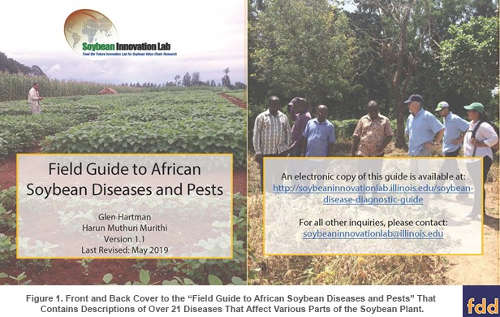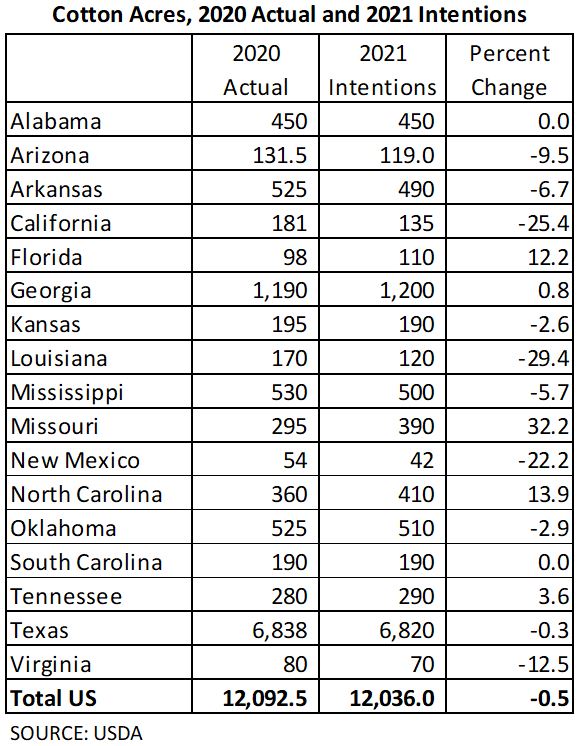By Glen Hartman, Harun Murithi
USAID’s Feed the Future Lab for Soybean Value Chain Research, aka the Soybean Innovation Lab (SIL), is a research for development project begun in 2013. The team of 40 US researchers work in 17 countries, most of which are in Sub-Saharan Africa. The University of Illinois is the lead institution, accompanied by the University of Missouri and Mississippi State University. Recently, farmdoc asked SIL to provide a series of articles describing the state of soybean development in Sub-Saharan Africa. This series of articles describes the current state of soybean in Africa from the multiple disciplines that comprise the Soybean Innovation Lab. Peter Goldsmith is the Principal Investigator at the Soybean Innovation Lab. Feel free to reach out to Amy Karagiannakis at the Soybean Innovation Lab at soybeaninnovationlab@mx.uillinois.edu for more information on any of the topics, or if you would like to collaborate with the team.
The previous farmdoc daily articles in this series were published on July 31, 2019, August 7, 2019, and August 8, 2019.
Soybean production occurs throughout Sub-Saharan Africa with Nigeria and South Africa, respectively, leading production with 1.32 and 0.73 million tons based on data from 2017 (FAOSTAT, 2019). The total production of soybean in Africa in 2017 was 3.13 million tons, which represents a 5.8-fold increase over the last 30 years compared to a 3.8-fold increase for world production during the same time period. Still, soybean production in Africa represents about 1% of the global production in 2017 (FAOSTAT, 2019). Production of soybean in Africa could increase dramatically and the continent could become a major world producer as more effort in recent years has focused on increasing production through programs like the Soybean Innovation Lab (SIL) which has partnered with International Institute of Tropical Agriculture (IITA), and other agencies to improve overall performance of ITTA breeding stocks, nationally released cultivars, and have introduced new germplasm from Brazil and the USA with the goal of developing new high-yielding cultivars. With this interest, diseases of soybean also have been a major concern since many of them are known to reduce yields and seed quality.
Diseases of soybean in Africa were first documented in 1919 with mention of “black mildew”, “blight”, and “rust” (Shurtleff and Aoyagi, 2009). With intensity to increase production in many new areas, management of diseases have gained more interest especially in a sustainable manner like breeding for resistance. The majority of soybean diseases in Africa also occur worldwide with a few exceptions (Hartman, 2015). Diseases of importance in Africa include frogeye leaf spot, red leaf blotch, rust, and sudden death syndrome (Fig. 1) (Hartman and Murithi, 2019). The diseases are not uniformly distributed so in certain countries these and other diseases maybe consider major or minor being either geographically restricted or more widespread. For the most part, soybean disease distribution over Sub-Sahara Africa is unknown, although a few newer reports like for rust provide distribution (Murithi et al., 2015; Murithi et al., 2017); however, for the case of soybean rust that distribution is in dynamic flux and may change from season to season and location to location. There is no unified source of information for obtaining updates on diseases of soybean in Africa.

In Africa, there are some locations that have grown soybean extensively in rotation for a number of decades, but there are other locations where soybean is a relatively new crop. In some cases, diseases may be introduced with the crop either through human activity, seeds, vectors, or water and wind. In other cases, the pathogen may be present on another host and when a susceptible crop like soybean is introduced, a new disease may be described. This seems to be the case for the fungal pathogen causing red leaf blotch of soybean, which appears to be endemic in Sub-Saharan Africa, and jumped to soybean when the crop was introduced (Hartman et al., 1987). Of the diseases that occur in Africa, red leaf blotch is probably the most concerning since there is little information about this disease and its occurrence as it has only been documented in Africa (Hartman et al., 2009). Also, based on some recent evaluation of soybean germplasm, there does not appear to be any resistance to this disease (Tooley, 2017) unlike most of the other important diseases of soybean found in Africa or worldwide that have known resistant sources. Another disease of unknown distribution and importance that was recently reported for the first time in Africa is Myrothecium leaf spot that was recently reported in Ghana (Fig. 2) (Haudenshield et al., 2018). This particular disease has an unknown distribution but has been reported in other parts of the world including the United States. In addition, a report of another disease, bacterial tan spot, that has somewhat of an unknown or restricted distribution was reported recently in Zambia (Fig. 2) (Pawlowski and Hartman, 2019). In terms of other disease reports in the future, it is likely that new reports of already described diseases will be forthcoming and perhaps new reports of diseases not yet described on soybean.

Disease resistance in soybean has been an effective tool along with other management options to reduce potential losses. The discovery and introgression of disease resistance genes provides benefits to yield gain and crop stability (Hartman et al. 2015). Most commercial soybean cultivars grown in the United States today include resistance to one or more pathogens (Chawla et al., 2013). Soybean growers in the United States have options to select commercial cultivars with resistance (sometimes referred to as tolerance) to bacterial blight, bacterial pustule, brown stem rot, downy mildew, frog-eye leaf spot, Phytophthora root and stem rot, Sclerotinia stem rot, soybean aphid, soybean cyst nematode, stem canker, and sudden death syndrome. For other diseases, like anthracnose, brown spot, Cercospora leaf blight, charcoal rot, and Phomopsis seed decay, and pod and stem blight, resistant cultivars have not been advertised by private companies, although sources of resistance may have been reported. In Africa, most of the fore-mentioned diseases have been reported, but there is little information on whether disease resistance has been used in developing commercial cultivars that farmers are growing. Further research is needed to understand the complexities of soybean diseases in Africa. This information is needed to assist researchers in developing management programs including breeding strategies to the most important soybean diseases in Africa.
Acknowledgements
This study was supported by USAID through a grant to the University of Illinois Soybean Innovation Lab and by the USDA-Agriculture Research Service.
Source : illinois.edu